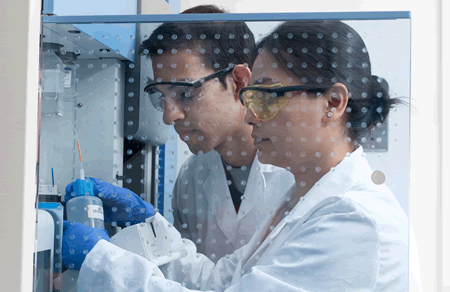
Editor’s Note: This blog post was published earlier today by The Hill, on its Congress Blog.
Angelina Jolie, best known as an actress and director, has recently taken center stage in a robust public discussion about genetic testing and the patentability of genetic discoveries with her revelation that she had undergone prophylactic bilateral mastectomy because she carried “a faulty gene, BRCA1, which sharply increases {her} risk of developing breast and ovarian cancer.”
Almost every aspect of Ms. Jolie’s decision has been dissected by critics and admirers alike, but one fundamental point has been largely ignored: what made Ms. Jolie’s decision possible is over two decades of painstaking research, most of it supported by the National Institutes of Health (NIH); research funding that the sequester now places in jeopardy.
Three NIH-funded discoveries made Ms. Jolie’s decision possible: 1) recognition that in some families, breast cancer occurs much more frequently than in the general public; 2) isolation of two genes, BRCA1 and BRCA2, in which “misspellings” lead to increased risk of breast cancer ; 3) recognition that prophylactic bilateral mastectomy increases survival by over 90 percent in women carrying one of the faulty BRCA1 or BRCA2 genes.
NIH-funded research created the foundation for the biotechnology industry and the development of the methods that enabled isolation of the BRCA1 and BRCA2 genes. As a result of NIH funding, new and promising treatments for women who develop breast cancer due to faulty BRCA genes are just now being tested in academic medical centers across the country, including Montefiore-Einstein. And, for women at risk of breast cancer due to faulty genes, more research is needed to identify new ways to prevent cancer.
Yet, instead of investing more in NIH-supported research to prevent and treat breast cancer, the sequester mandates across-the-board cuts. There have been a total of $1.5 billion in sequestration cuts to the NIH budget, which had already declined by 22 percent in constant dollars since 2003. At Einstein-Montefiore and research centers across the country, NIH funding is being cut by 5-10 percent. NIH will fund 700 fewer grants this year, which means that new ideas that could lead to valuable discoveries will not be tested. A generation of young investigators may be lost, discouraged by the bleak prospects for obtaining funding to launch their careers. At a time when we have gained a deeper understanding of the causes of cancer, and when that understanding is being translated into less toxic targeted therapies do we really want to retard progress?
Cancer is only one of the major diseases for which it is vital that we not only preserve but increase NIH research, which saves hundreds of thousands of lives each year. Some argue that NIH-supported research discoveries increase health care costs that are already unsustainable. That is hardly the case. Thanks to increased understanding of the disease and how to treat it, U.S. cancer death rates are falling about 1% a year, with each 1% saving our country about $500 billion in health care costs. What we need to do to contain costs in this country is to change how we deliver care. We need to realign the misguided payment system, encourage the use of the most effective interventions, and most critically, reduce the fragmentation that causes more waste and expense to the system than any NIH-funded discovery ever will.
Without a vigorous NIH-supported research portfolio, future generations will be robbed of the vitality of inquiring minds and the kinds of discoveries that empowered Ms. Jolie. The recent Supreme Court ruling on gene patenting is a critical step in ensuring widespread access to the tests that will reveal one’s own genetic make-up. Now is the time to invest in critical NIH-funded research so we can uncover a better understanding of what to do to protect our health and treat disease once we identify “faulty” genes. Such discoveries can help us reduce the need for expensive treatments and advance the health of our democracy.

